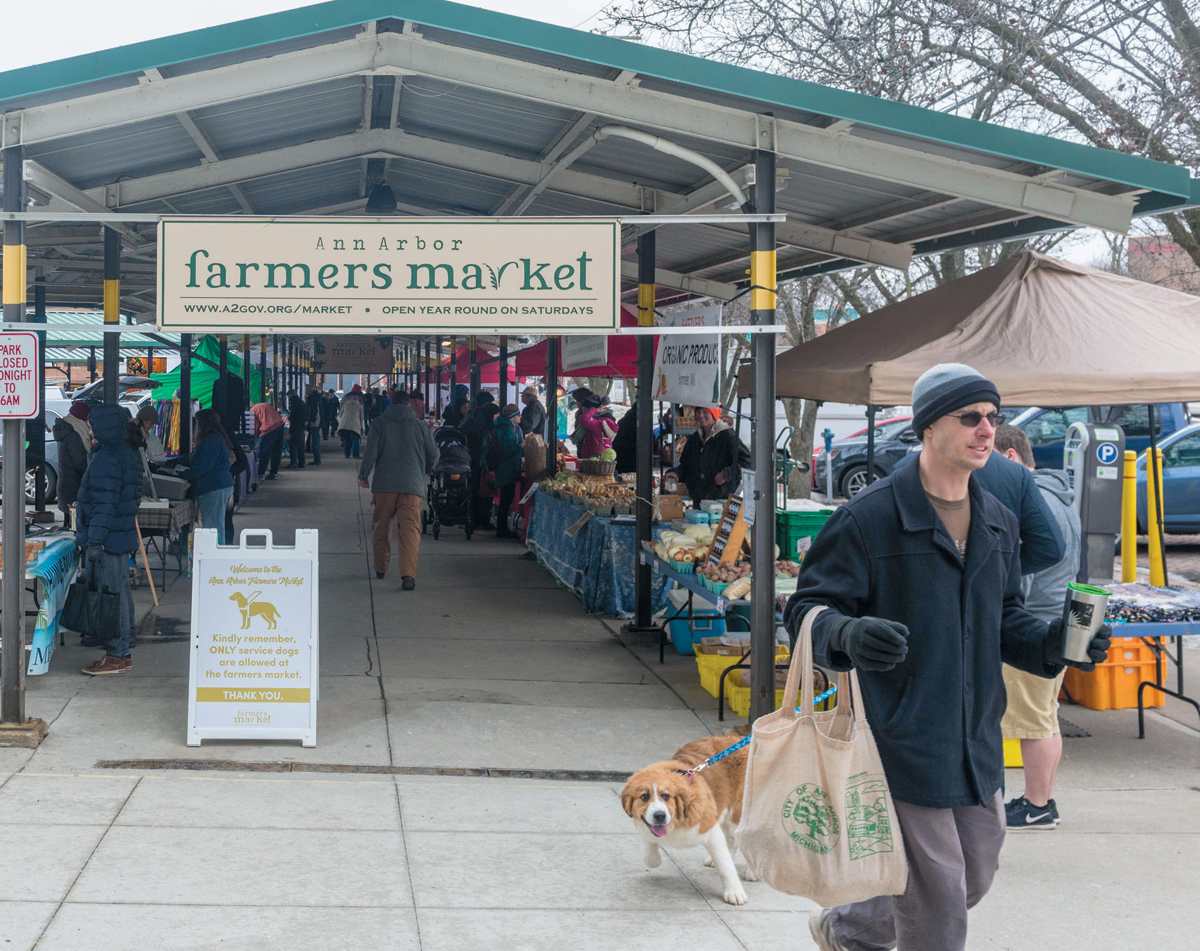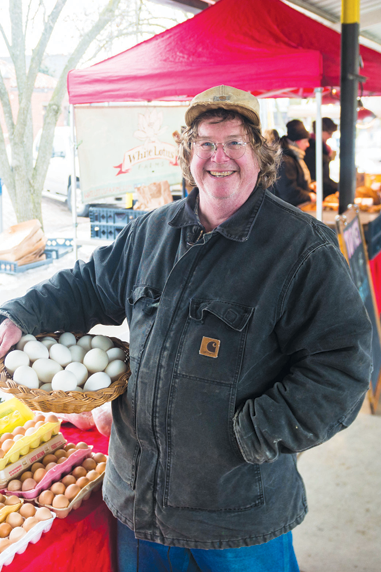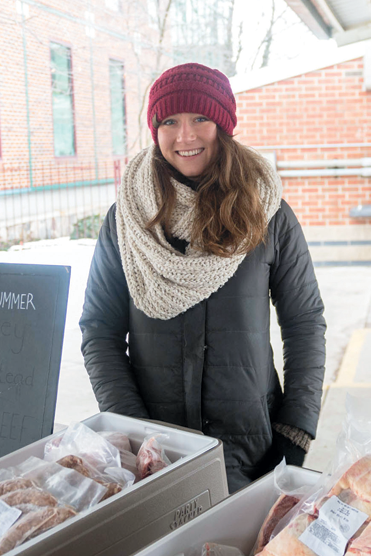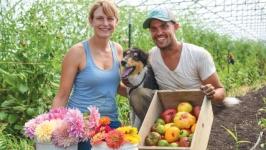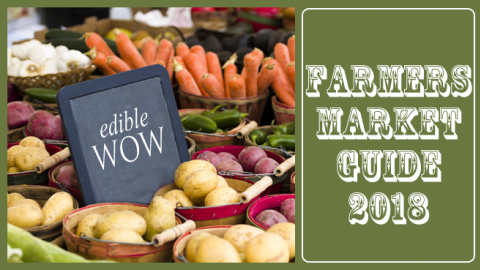Springtime at the Market
On an unseasonably warm January day, John Harnois is wearing a hat resembling a cartoon turkey as he hawks poultry at the Ann Arbor Farmers Market. He’s bundled up, as the market is outdoors. Nearby, another vendor has brought a couple of propane heaters to keep warm.
Ann Arbor’s market, in the historic Kerrytown neighborhood, is unusual in that it is open year-round outdoors. The market, which will turn 100 years old next year, is under open-air sheds next door to Kerrytown Market. On this day, the sun has brought out shoppers, and 33 vendors are busy selling potatoes, cabbage, carrots, turnips, apples and cider, maple syrup, baked goods, coffee, candy and a few handicrafts.
“You’ve got to come well-dressed,” says Matthew Haarklou, who was selling various meats from family-owned Whitney Farmstead. He’s wearing boots and overalls, but the sunshine has allowed him to remove his coat. “As a meat vendor, I really love the cold, because I can have my meat on display,” he says. But he skipped a week in January, because when it’s brutally cold, “You’re not going to do well.”
This has always been an outdoor market. It was founded in 1919 at the corner of Main and Huron by a women’s group. According to a history written by the Ann Arbor Observer, it was known as the curb market because farmers pulled their horse-drawn wagons to the curb to sell their wares. The idea was to cut the cost of food by giving residents an opportunity to buy direct from producers.
Growth prompted a move to Fourth Avenue. Then, in 1931, the market moved to its present location; land was donated to the city by a lumberman. It was the Depression, and the sheds were built by WPA work crews. The city had taken over management in 1921, and today the market is operated by the Ann Arbor Parks and Recreation Department.
From January through April the market is open only on Saturdays; Wednesdays are added starting in May. Not surprisingly, attendance is much lower in the colder months. Last year an average of 3,000 people per day visited in winter, versus 13,000 in summer. “March isn’t so bad,” says Market Manager Stephanie Willette. “In April people start to come back.”
Over the course of last year, the market averaged 48 vendors per week. That reflects the coldest weeks in December, when there were only about 15. “The people who come don’t dawdle, they don’t socialize,” says Harnois, a year-round vendor from Whitmore Lake. “But the people who do come through spend their money.”
The return of milder weather will bring more vendors and new vendors. “Especially in spring, we get a lot of new applications,” Willette says. “I’m always getting requests for people to get into the market.”
From its inception, market rules have only allowed vendors who make, grow or produce their own products. Producers, artisans and food trucks are welcome; their production facilities are inspected every other year.
Several new initiatives are coming this spring. A series of cooking demonstrations will feature local chefs, and a flower day is set for Sunday, May 27. The event will include music and food trucks. In addition, “We’re working on an initiative to have better farmer-to-chef relations,” Willette says. Knowing that some Ann Arbor chefs use the market, she plans to publish a wholesale price list online so chefs can see what’s available and pre-order. There will also be a dedicated pickup area. “This is kind of building on what’s already there.”
This spring, popular food-truck rallies will return on the first Wednesday of the month from May to October. This will be the third year for food-truck rallies at the market. “They’re huge events,” Willette says. The market stays open, and there are children’s activities and music as well.
After nearly 100 years of dealing with the elements, there is now a plan to grow the market by adding an indoor location on a lot adjacent to the sheds. The city has approved the plan, but the bid came in over budget. “Right now, we’re kind of searching for funding,” Willette says. The intent is to build in the next few years. The design features a flexible space that can be open-air when weather permits and enclosed when it doesn’t.
An indoor market would make the hardy winter vendors happy. “A lot more people would come to market if they knew they wouldn’t be freezing their tails off,” Harnois says. Haarklou agrees. “The people who are here in winter, they see we need it,” he says.
The Kerrytown neighborhood is filled with shops (including Zingerman’s), brick streets and odd angles. This year the city plans to improve the area by repaving some streets and the market parking lot, and add amenities such as picnic tables, trees and planters.Construction updates will be posted on the market’s webpage. That will mean some inconvenience in the short term. But when it’s done, “it will be a lot safer for pedestrians,” Willette says. “I think it’s going to be really great.”


